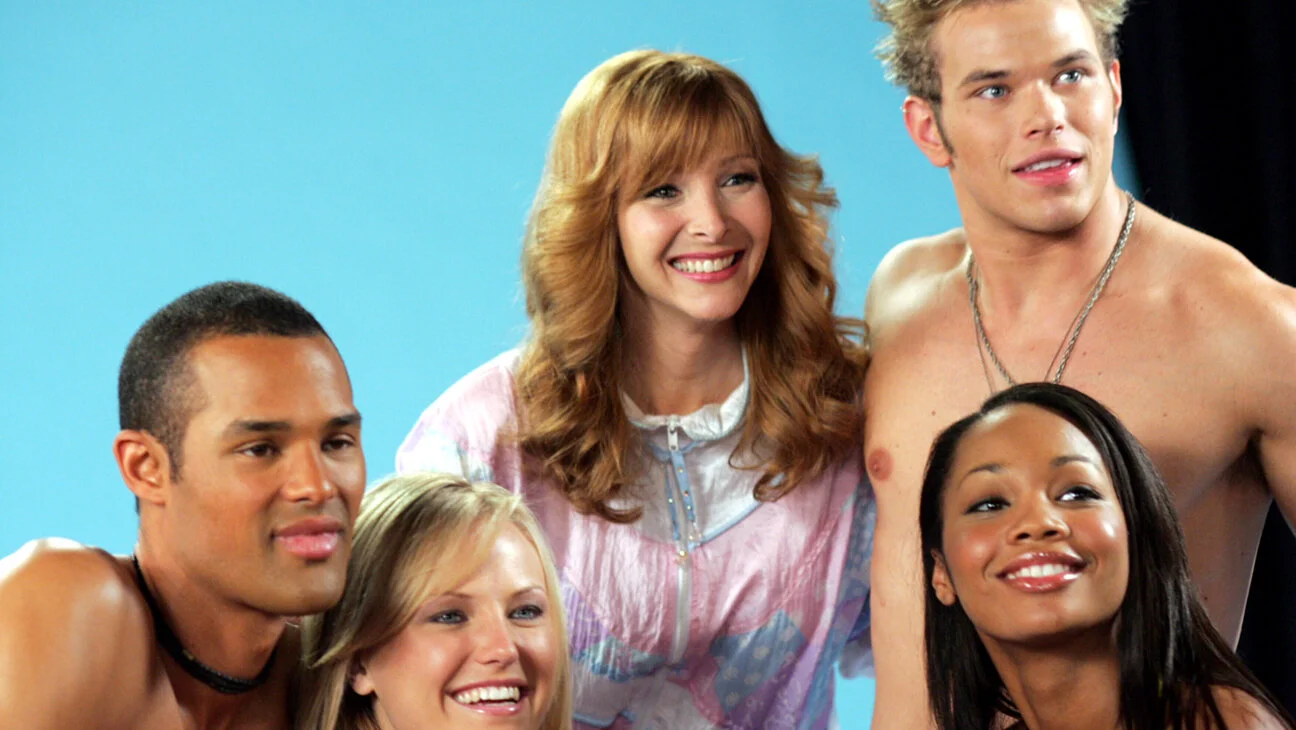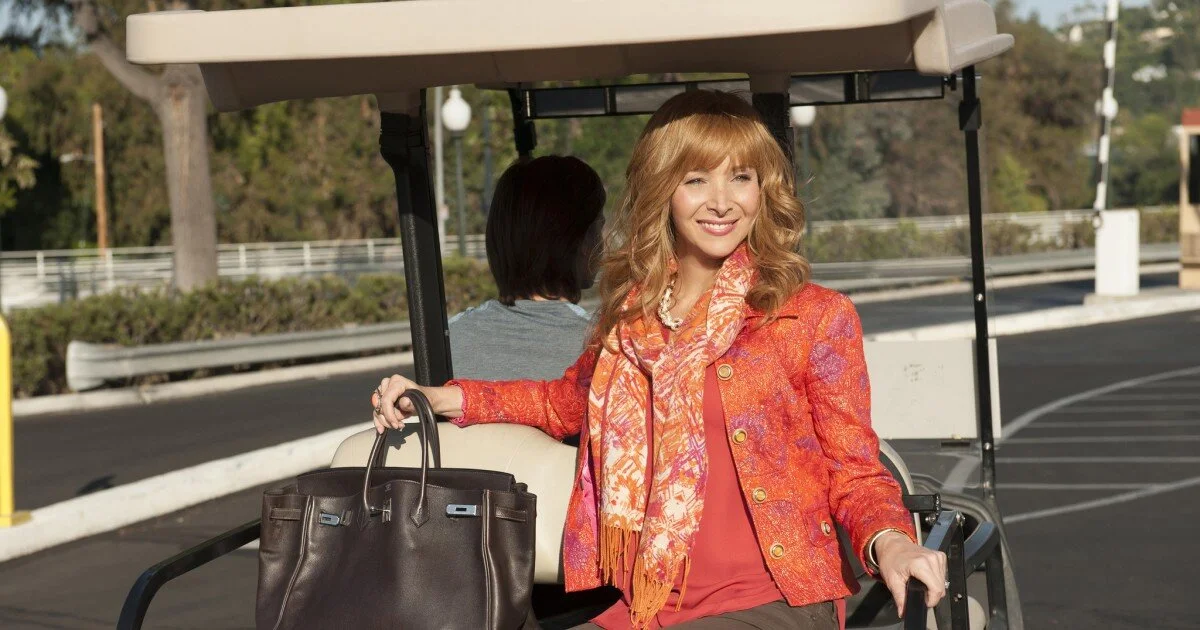The Comeback, and the Ineffaceable Embarrassment of Reinvention
Series Key Art for “The Comeback.”
When I was 18 years old, I moved to New York City. Inevitable and inimitable, the alluring bait-and-tackle known as New York University hooked yet another gay fish with its “in and of the city” mantra, (cult-like indoctrinating pledge? Whichever you prefer). And yet, at the time, I was somewhat unaware that I was one of those lucky fish, because I wasn’t quite out of the closet yet.
At least, not to anyone else. In my head, I knew I was not purely a salt-of-the-earth, red-blooded American male straight, but I wasn’t quite sure how to refer to myself in terms of sexual orientation. I was testing the waters, or what industry professionals would call “workshopping,” with complete strangers at the occasional NYU party and identifying as gay, without truly knowing if I was comfortable with such a moniker.
With these strangers, my coming-out-one-man-show was a process to be oft-repeated, always forgotten, and ultimately, an exercise in reinvention with no consequences. I knew in the back of my head that most of these people (and by “people,” I mean drunk children/18 year olds); unwitting audience members of my inaugural coming out performances, or “previews” if you will, would never even remember I came out to them at all. Rinse, wash, repeat. I would do this over and over again, never having to stand with both feet in one camp at one time, hoping I could drift unknown, perpetually closeted.
Then, on one fateful Thanksgiving Day, someone beat me to the punch.
I have two aunts on my mother’s side of the family. One of them is half-sister to my mother, and due to a variety of mathematical circumstances that I’ll leave to your imagination, she is actually much closer in age to me than to my older relatives. She had a young, fresh take on film and television, and we would often bond over our shared love (or hatred) of whatever cultural topic was most...well, topical at the time.
But one day, one of these discussions led to a deep dive into an older piece of television, one that would come to shape my own self-perception, and also serve as an eerie portent of my eventual, final coming out, or “closing night,” if you will.
From left to right, Jason Olive, Malin Ackerman, Lisa Kudrow, Kimberly Jeppson, and Kellan Lutz pose for series art for the fake sitcom “Room & Bored.”
My aunt recommended to me The Comeback, an HBO original whose first season premiered in 2005, right at the apex of the American love affair with reality television. Starring Lisa Kudrow, the show follows washed-up 90s sitcom star Valerie Cherish as she attempts to launch a career comeback. We follow her journey as she auditions for a role in a new multicam pilot, and as she shoots “The Comeback,” a companion reality show following her everyday life as an actress; a desperate attempt to reinvent herself for the modern era of broadcast television.
In the show, we follow Valerie through the camera lenses that are actively shooting her reality series, as if we’re watching raw, unedited footage of the show being made as we view it. This is perhaps the most singular element of The Comeback, and what often makes it so cringe-inducing.
Much of the show is shot in long, tight takes focused solely on Valerie as she manically tries to maintain composure amidst increasingly baffling circumstances. She’s desperate for the spotlight, but not so desperate as to embrace the tropes the world has come to know from reality television. Crying, fighting, vomiting, and more are all off limits for Valerie.
To Valerie, her reality series isn’t like all those other shows; cringe-worthy and occasionally exploitative. Rather, this is a comeback with dignity, and one that will put her back in the good graces of the American public, and perhaps more importantly, in the good graces of Hollywood.
Unbeknownst to me at the time of recommendation, The Comeback is something of a queer cultural Mecca, known far and wide to most gay men, and adored for its usage of tropes and archetypes often revered by a gay audience. There’s a middle aged woman on the verge of a breakdown, incisive Hollywood insider humor, and the occasionally devastating, turn-on-a-dime tone of Kudrow’s characterization; all elements that lure gay male adults in the same way that NYU lures gay male teens.
So yes, my aunt recommended The Comeback, a cultural touchstone for many-a-gay-man, to me, an 18 year old fresh-off-the-plane NYU Film Student who was struggling with his sexuality.
Suffice to say, she wasn’t struggling with my sexuality.
Dan Bucatinsky as Valerie Cherish’s beleaguered publicist “Billy Stanton.”
I devoured the first season over the course of that single Thanksgiving Day, and the subsequent second season (which premiered almost a decade later) when it aired the following year. It was genius; the most inventive thing I’d ever seen on television, and all I could talk about for the following 8 years of my life. For those of you keeping score at home, those are all of the years I’ve been alive since first watching The Comeback at the tender age of 18.
Subversive, eloquent, insightful, hilarious, formative, devastating, nauseating, electrifying, and a jerker of tears, both from laughter and sadness; The Comeback is one of my favorite television shows of all time. It is entirely impossible for me to confine everything I love about this show into just one blog post. Perhaps I’ll devote my remaining years to developing a manifesto of sorts to guide the next generation of gay men towards worshipping at the altar of Valerie Cherish, as my aunt did to me all those years ago.
But for now, I’ll just discuss one very important scene from the show’s first season, one that has come to be inextricable from the series as a whole, as well as one of my personal favorites.
Before reading further, I highly suggest you watch the scene, which I’ll link below. For context, in the scene, Valerie is filming one of her first in-one “confessionals” for her upcoming reality show, in which she explains to camera, and subsequently to the show’s future audience, that she was offered the part in a new sitcom called “Room & Bored,” pun regretfully intended. However, as they film the scene and Valerie tells the world that she got the part, the producer of “The Comeback” Jane (played expertly by Laura Silverman) has some feedback for her. Follow this link to the scene, or view below.
Welcome back. There’s a lot to talk about with this scene. There’s the intensity of the close-up, the lack of any sort of reprieve from the tension between Valerie and Jane, and perhaps most memorably, the complete 180 from despondent and dignified, to enthused and regretful that Kudrow performs to perfection. These beats, these moments, comprise the entire essence of The Comeback. This is what the show is from start to finish. Valerie desperately trying to control the perception of her comeback, attempting to infuse it with dignity and decorum, all the while bashing her head against the inhibitions that Jane, her producer, is trying to break down, so as to make the reality show “bigger,” and more exciting.
It’s tense, uncomfortable, and hilarious.
Throughout the first season and beyond, the show escalates this interaction. We see Valerie cry, get drunk, and even vomit all on camera, despite her best attempts to the contrary, and pushed to the limits by Jane. Jane pushes to make Valerie’s reality a little “bigger,” but the truth is, it was always that way, just concealed, always bubbling under the surface. It only took the right prodding to expose it. This is Valerie’s real reality.
Now, you can’t create a compelling reality show without reality, or rather, a heightened version of that reality. But sadly for Valerie, all she knows how to do is fake reality. It’s in her bones from the get-go of the show; her acting chops forged in the fire of a cheesy 90s sitcom (which in some ways emulates Kudrow’s own experience in Friends). The 90s multicam sitcom is a unique genre of television reliant on canned laughter, repetition of tropes, and unbridled, sometimes unearned success.
Valerie prepares to shoot an on-camera confessional for “The Comeback’s” 2nd season.
And, I love that genre very dearly. But, it is the exact opposite of a reality show; a fun-house mirror version of reality.
Conversely, a reality show relies on vulnerability, and the idea that we, the audience, are seeing something we’re almost not meant to see. Its engine runs on moments where we catch human beings on camera in their lowest, most embarrassing state. And, to refer to Kudrow’s own musings on The Comeback: what’s more embarrassing than a desperate attempt at reinvention?
After all, reinvention, inherently, is the admittance that our previous self wasn’t good enough. We weren’t the best version of ourselves that we could’ve been. It is the confession of a mistake. That type of confession, and the embarrassment that comes with it, is perhaps the quickest way to vulnerability, and therefore the quickest way to a good reality show.
Perhaps that’s why the “confessional” format works so well for a reality TV show? In these confessionals, we sometimes see the darker side of humanity, and occasionally, the redemption of that darkness. But, not every lost soul who runs the gamut of the reality TV show engine emerges unscathed, and Valerie is no exception. In The Comeback, the better the reality show gets, and the more successful Valerie becomes, the more her actual reality begins to implode. Throughout the show, her marriage suffers, her friendships suffer, all at the expense of her reinvention, which, in many ways, is ultimately successful.
Valerie gets transported to the set of “Seeing Red,” The Comeback’s 2nd season “show within a show.”
I won’t spoil for you how The Comeback ends, and whether or not it redeems Valerie or offers her up for sacrifice in the court of public opinion. But, I can tell you this: The Comeback believes that reinvention is possible. It believes we can change, and that we can reinvent ourselves.
It just may come at the expense of your dignity.
But, this loss is always temporary, you always get it back, and it is always worth it.
I mentioned earlier that I think one reason gay men in particular love The Comeback is because it houses dozens, if not hundreds of tropes often adored by gay viewers. But, I’d like to offer up one other possible reason gay men love this show, and one reason it was particularly important for me to find this show when I did.
It’s because we all reinvent ourselves when we come out.
When I came out of the closet, one of my biggest fears was being thought of differently by my friends, family, and loved ones. There was an innate shame there, an embarrassment, and a fear that coming out would be the acknowledgement that I was living a lie, and that now, I would have to reinvent myself completely, and present that new self to the world, offering it up for judgement.
That’s what Valerie Cherish does in The Comeback. But, she does so with such a lack of self-awareness, and an occasionally uninhibited mania typically reserved for sociopaths, that allows us to make light of that embarrassment in a way that makes us laugh, and perhaps feel less self-conscious about our own reinvention. The Comeback, in that sense, is not just a cultural Mecca for gay men, and for me, but a spiritual one too.
So, a Mecca.
The Comeback is available to stream on HBOMax.




